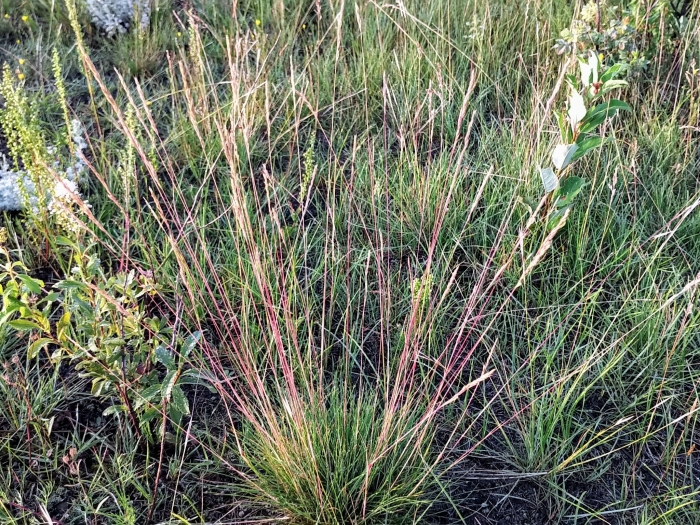Rocky Mountain Fescue
(Festuca saximontana)
Rocky Mountain Fescue (Festuca saximontana)
/
/

Doug Macaulay
CC BY 4.0
Image By:
Doug Macaulay
Recorded By:
Copyright:
CC BY 4.0
Copyright Notice:
Photo by: Doug Macaulay | License Type: CC BY 4.0 | License URL: http://creativecommons.org/licenses/by/4.0/ | Rights Holder: Doug Macaulay | Publisher: iNaturalist | Date Created: 2020-07-20T06:23:23-07:00 |


















Estimated Native Range
Summary
Festuca saximontana, commonly known as Rocky Mountain Fescue, is an evergreen perennial grass native to alpine and subalpine zones, open woodlands, and grasslands of the Western United States, throughout Canada, and parts of Greenland. It typically forms dense tufts reaching 10 to 60 centimeters tall, with a bluish-grey to green coloration. The foliage is fine-textured, and the plant is known for its bunch-forming growth habit without the presence of rhizomes. The inflorescence consists of greenish spikelets, each with three to five florets, and measures 4.5–8.8 mm (0.18–0.35 in) long. Flowering occurs in late spring to early summer, and while the flowers are not particularly showy, they add a subtle charm to the grass’s texture.
Rocky Mountain Fescue is valued for its drought tolerance and ability to thrive in poor soils, making it an excellent choice for xeriscaping and naturalized areas. It is also used for erosion control on slopes and in restoration projects. This grass prefers full sun but can tolerate light shade and requires well-drained soils. It is low-maintenance, requiring minimal water once established, and does not typically suffer from serious pest or disease problems. However, it may not perform well in hot, humid climates or in areas with heavy clay soils.CC BY-SA 4.0
Rocky Mountain Fescue is valued for its drought tolerance and ability to thrive in poor soils, making it an excellent choice for xeriscaping and naturalized areas. It is also used for erosion control on slopes and in restoration projects. This grass prefers full sun but can tolerate light shade and requires well-drained soils. It is low-maintenance, requiring minimal water once established, and does not typically suffer from serious pest or disease problems. However, it may not perform well in hot, humid climates or in areas with heavy clay soils.CC BY-SA 4.0
Plant Description
- Plant Type: Grass
- Height: 0.3-1.5 feet
- Width: 0.2-1 feet
- Growth Rate: Moderate
- Flower Color: N/A
- Flowering Season: Spring, Summer
- Leaf Retention: Evergreen
Growth Requirements
- Sun: Full Sun
- Water: Medium, High
- Drainage: Fast
Common Uses
Bird Garden, Deer Resistant, Drought Tolerant, Low Maintenance, Rabbit Resistant
Natural Habitat
native to alpine and subalpine zones, open woodlands, and grasslands of the Western United States, throughout Canada, and parts of Greenland
Other Names
Common Names: Mountain Fescue
Scientific Names: , Festuca saximontana, Festuca ovina var. rydbergii, Festuca ovina var. purpurascens, Festuca ovina var. saximontana, Festuca saximontana var. robertsiana, Festuca brachyphylla subsp. saximontana, Festuca canadensis, Festuca brachyphylla var. rydbergii, Festuca ovina subsp. saximontana
GBIF Accepted Name: Festuca saximontana Rydb.